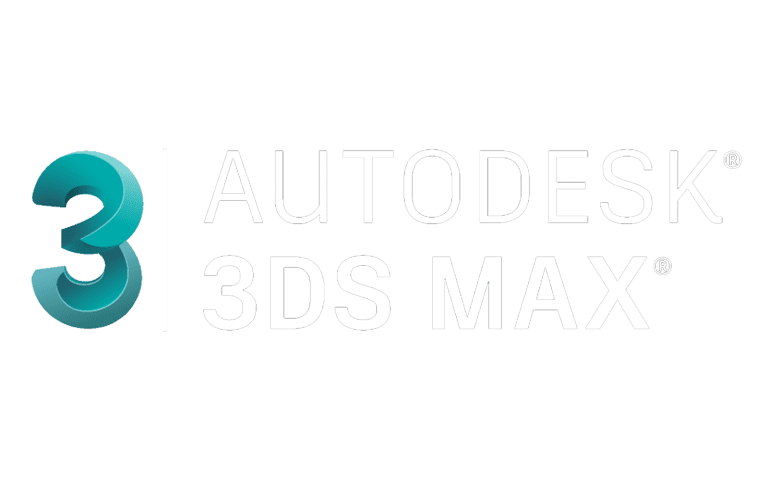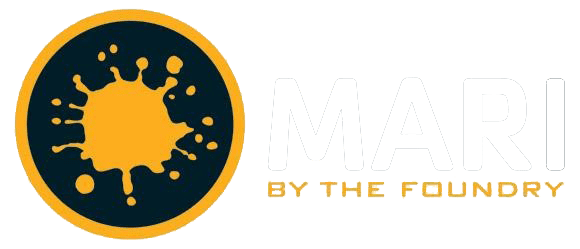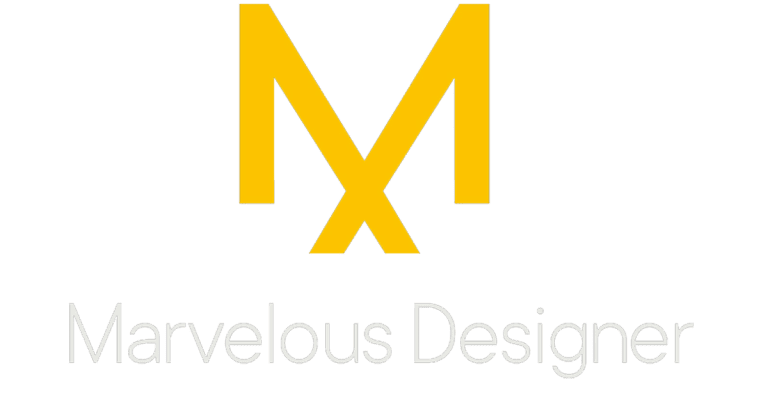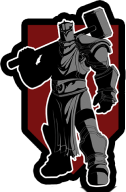Game art outsourcing
Polydin is a game art studio to envision greatness. We strive to push the boundaries of creativity and build long-lasting partnerships with our clients. Our talented artists work closely with you to bring your vision to reality, breathing life into your ideas and exceeding your expectations. Our mission is to deliver stunning visuals that inspire and captivate your audience.
What we do?
Polydin Studio offers AAA art production services for games and interactive projects. We have many different departments, including 2D art, 3D art, and animation. Let’s take a closer look at our services.

2D Art
Our 2D art services are designed to meet your exact needs. Polydin’s skilled artists carefully listen to your requirements and use their expertise and artistic tools to transform your ideas into stunning visuals. Concept art is a crucial first step in every project, that’s why our team is committed to establishing the right style and mood to make your visions come to reality.
3D Art
Polydin’s largest department is our 3D production team, which offers a range of services including 3D environments, characters, props, outfits, etc. Our skilled artists excel in both realistic and stylized styles, ensuring that we can meet the needs of any project. Whether you need lifelike renderings or whimsical designs, our 3D production team make sure to handle it perfectly.
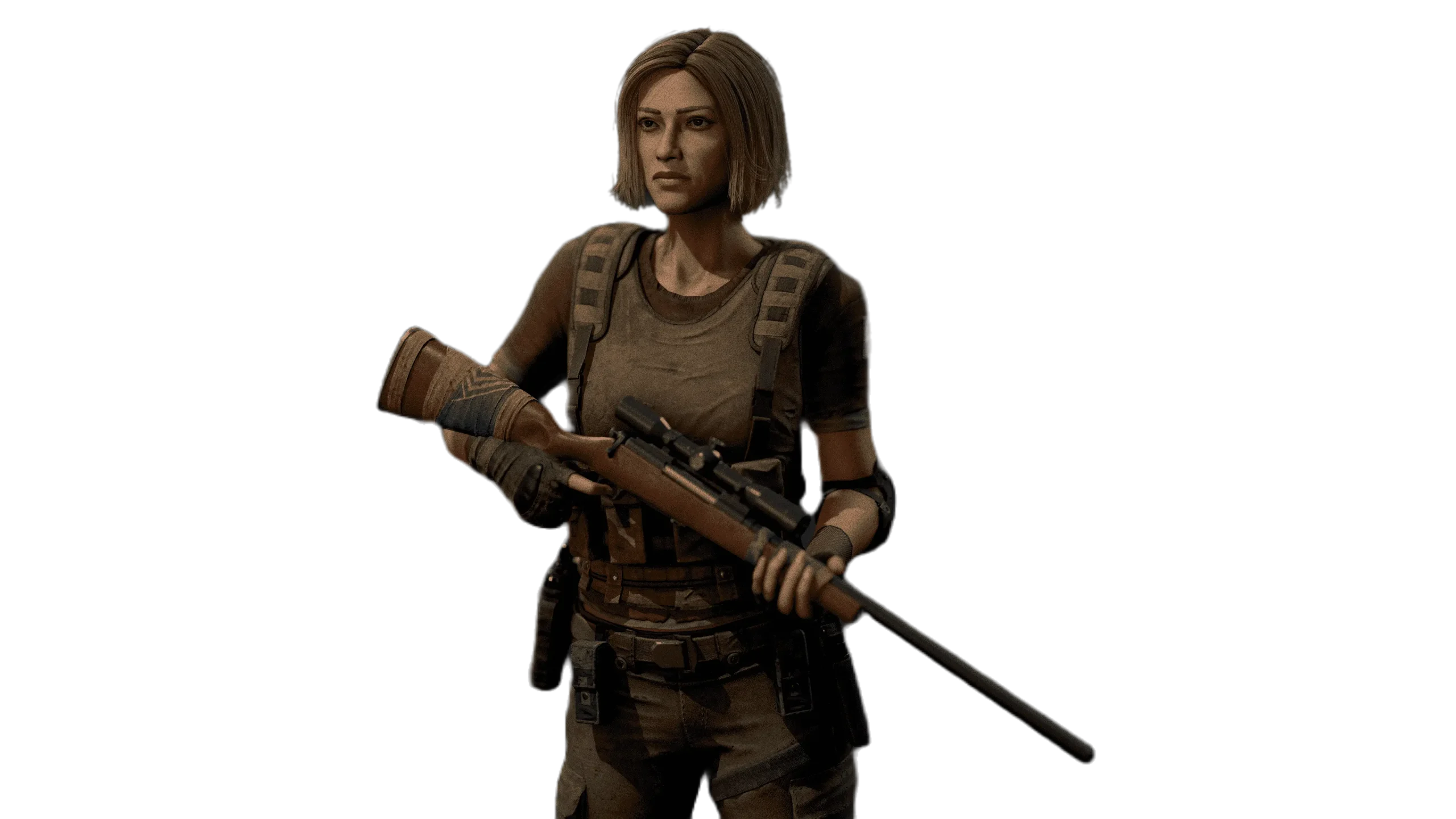
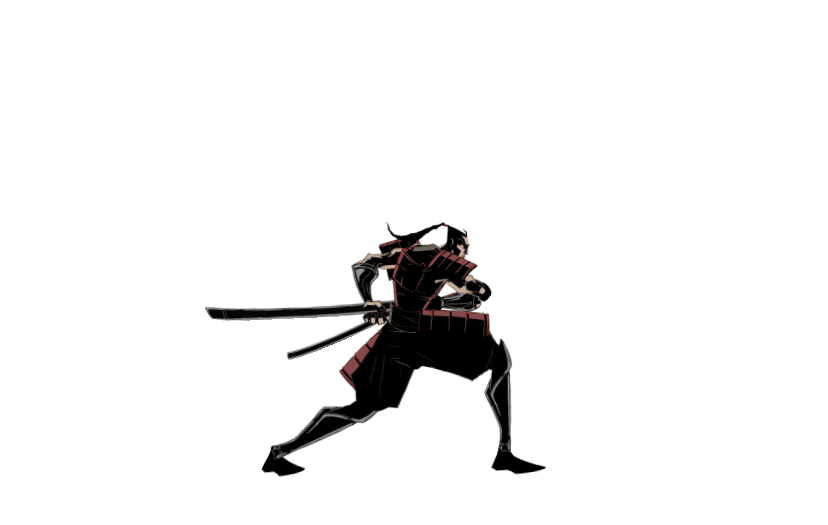
Animation
One of the key elements that creates a truly immersive gameplay experience is high-quality animation. Our skilled animation team is well-versed in a range of techniques, from 2D and 3D animation to real-time VFX, and can deliver stunning visuals that engross players into the gameplay and enhance their experience.
Facts About Polydin
Why should a Game Development Studio Consider Outsourcing game art?
Game art outsourcing is a beneficial practice especially when it’s done with reliable and established game art outsourcing studios. By leveraging external art resources, game studios can speed up their production timelines.
Outsourcing game art can often be more cost-effective compared to hiring an in-house art team. In many regions, labor costs for game art development can be significantly lower, allowing studios to save on expenses related to salaries, benefits, equipment, and workspace.
Outsourcing enables game studios to tap into a global talent pool and gain access to specialized artists with diverse skill sets. It also provides game studios with the ability to scale their art production up or down based on project requirements. It allows for flexibility in resource allocation, enabling studios to meet tight deadlines or handle peaks in workload without the need for permanent hires or excessive overtime.
Collaborating with artists from different regions and cultures can also infuse fresh perspectives and diverse art styles into the game. Outsourcing can introduce unique aesthetics, visual storytelling techniques, and cultural nuances that enhance the game’s appeal and broaden its global appeal.
Game development is a complex and risky endeavor. With a credible vendor, outsourcing game art can help mitigate certain risks associated with art production. Established outsourcing partners often have experience working on various projects and can provide valuable insights and suggestions, reducing the likelihood of art-related issues and delays.
What are the potential challenges in-game art outsourcing?
Everything comes with its own sets of benefits and challenges, and game art outsourcing is no different. Although art outsourcing can save a lot of costs, help access to specialized talents and increase the production capacity, it also comes with a few challenges. Among these challenges, time zone differences, maintaining consistent quality, and project management are the most common.
Collaborating with artists in different time zones can introduce delays in communication and feedback cycles. Scheduling meetings or resolving urgent issues may become more challenging. Careful planning and establishing overlapping work hours can help mitigate this challenge.
Maintaining consistent quality across outsourced art assets can be a tough one. There may be variations in skill levels, artistic styles, and adherence to project guidelines. Continuous monitoring, feedback loops, and well-defined quality control processes are necessary to ensure the desired standards are met.
At last, coordinating and managing multiple outsourced artists or studios can be complex and requires effective project management skills, clear documentation, milestone tracking, and regular progress updates to ensure the project stays on track. An experienced outsource manager or project manager can usually overcome this issue.
The Game Art Outsourcing Process
Game art outsourcing involves a series of carefully managed steps to ensure high-quality results while maintaining efficiency.
- Identifying the Requirement: The first step is to define the project’s artistic needs, such as characters, environments, or animations, and set clear specifications for style, polycount, and resolution. A detailed brief helps convey the creative vision effectively.
- Finding the Right Partner: Selecting the right outsourcing partner is critical. This involves evaluating portfolios, checking client testimonials, and assessing their expertise in similar projects to ensure alignment with your goals.
- Drawing Up the Contract: Contracts should detail project timelines, milestones, deliverables, payment terms, and intellectual property agreements. A comprehensive contract minimizes risks and sets clear expectations for both parties.
- Production: During production, continuous collaboration and feedback are essential. Regular check-ins and iterative reviews help ensure the art aligns with the agreed specifications and the creative direction.
- Review and Delivery: Before finalizing, the deliverables undergo quality checks to confirm compatibility with the project’s requirements. Any necessary revisions are made to achieve a polished, ready-to-use asset.
What are the stages of 2d game art?
The main stages of 2D game art can be summarized in 7 levels:
- Concept Art: This initial stage involves brainstorming and creating rough sketches to visualize the characters, environments, and overall aesthetic of the game. Concept art studio helps define the artistic direction and ensures that all team members have a clear understanding of the visual goals.
- Character Design: Once the concepts are approved, detailed character designs are created. This includes defining the characters’ appearances, poses, expressions, and unique features. Character sheets and turnarounds provide comprehensive views to guide further development.
- Environment Design: Similar to character design, environment design focuses on creating detailed backgrounds and settings. This includes landscapes, buildings, interiors, and other elements that make up the game world. Environmental art sets the mood and atmosphere for the game.
- Sprite Creation: Sprites are the individual images that represent characters, objects, and other elements in the game. This stage involves creating the final artwork, including various poses and animations for characters, as well as static images for objects and backgrounds.
- Animation: Animating the sprites is a critical stage, where static images are brought to life through movement. This includes creating walk cycles, attacks, idle animations, and other actions. Animation adds dynamism and enhances the gameplay experience.
- UI/UX Design: User Interface (UI) and User Experience (UX) design involve creating the visual elements of the game’s interface, such as menus, buttons, icons, and HUD (heads-up display) elements. Effective UI/UX design ensures that the game is intuitive and engaging.
- Polishing and Refinement: The final stage involves refining and polishing the art to ensure consistency and quality. This includes tweaking colors, refining details, and ensuring that all elements fit seamlessly within the game’s aesthetic.
What makes a good 2d art?
Good 2D art should have these qualities:
- Clarity and Readability: Good 2D art should be clear and easy to read, even at small sizes. This ensures that players can quickly understand what they see, which is essential for gameplay.
- Consistency: Consistency in style, color palette, and design elements is crucial. This creates a cohesive visual experience and helps maintain immersion.
- Expressiveness: Characters and environments should convey the intended emotions and atmosphere. Expressive designs and animations can greatly enhance storytelling and engagement.
- Attention to Detail: High-quality 2D art pays attention to the finer details, such as textures, shading, and highlights. These details add depth and richness to the visuals.
- Originality and Creativity: Good 2D art often stands out due to its originality and creative vision. Unique and innovative designs can make a game more memorable and appealing.
How to choose the best 2d art outsourcing studio?
- Portfolio and Experience: Review the studio’s portfolio to assess the quality and style of their previous work. Look for experience in creating art for games similar to yours and check for a consistent level of quality.
- Expertise and Specialization: Ensure that the studio has expertise in the specific type of art you need, whether it’s character design, environment art, UI/UX, or animation. Specialization can indicate a higher level of skill in that area.
- Client Testimonials and Reviews: Read testimonials and reviews from previous clients to gauge the studio’s reliability, professionalism, and ability to meet deadlines. Positive feedback from other developers can be a good indicator of the studio’s capabilities.
- Communication and Collaboration: Effective communication is crucial for successful outsourcing. Choose a studio that is responsive, understands your vision, and is willing to collaborate closely throughout the project.
- Flexibility and Adaptability: The best studios are flexible and adaptable, able to adjust to changing project requirements and provide creative solutions to challenges. This ensures a smooth workflow and successful outcomes.
- Pricing and Budget: Consider the studio’s pricing and ensure it fits within your budget. Be wary of studios that offer extremely low prices, as this can sometimes reflect lower quality or hidden costs. Balance cost with the quality and reliability of the service.
- Contract and Terms: Before committing, review the contract and terms carefully. Ensure that it includes clear milestones, deliverables, payment schedules, and ownership rights of the final artwork. A well-defined contract helps protect both parties and ensures mutual understanding.
By following these guidelines, you can find the right 2D art outsourcing studio that aligns with your project’s needs and helps bring your game to life with high-quality visual art.
What can you outsource for a video game studio?
Outsourcing has become a common practice in the video game industry, allowing studios to leverage specialized expertise, reduce costs, and streamline development processes. Here are some key aspects of game development that studios frequently outsource:
- Art Assets: Outsourcing art assets such as character models, environments, animations, and special effects is a popular choice for game studios. Outsourcing art allows studios to access a wide range of artistic styles and expertise, ensuring high-quality visuals that align with the game’s aesthetic vision.
- Sound Design and Music: Engaging game sound design and captivating music are essential elements of immersive gaming experiences. Many studios outsource sound design, voice acting, and game music composition to talented professionals who specialize in creating audio content tailored to the game’s atmosphere and narrative.
- Programming and Development: Outsourcing programming and development tasks can help game studios manage workload fluctuations and access specialized expertise in areas such as game engines, AI programming, networking, and optimization. By outsourcing development tasks, studios can accelerate production timelines and focus on core aspects of game design.
- Quality Assurance (QA) Testing: Thorough QA testing is crucial for identifying bugs, glitches, and performance issues that could detract from the player experience. Many studios outsource QA testing to external testing firms or independent testers who rigorously evaluate the game across different platforms and configurations.
- Localization and Translation: For games intended for global audiences, localization and translation services are essential for adapting the game’s text, dialogue, and user interface to different languages and cultural contexts. Outsourcing localization ensures accurate and culturally sensitive translations that resonate with players worldwide.
- Marketing and PR: Effective marketing and PR campaigns are vital for generating buzz and driving sales upon release. Studios may outsource marketing services to agencies or freelancers who specialize in video game promotion, influencer outreach, community management, and social media marketing.
By outsourcing these aspects of game development, studios can access specialized expertise, optimize resource allocation, and accelerate production timelines, ultimately delivering high-quality games that resonate with players.
What factors should be considered in the selection of an outsourcing partner?
Choosing the right outsourcing partner is a critical decision that can significantly impact the success of a game development project. Here are some key factors to consider when selecting an outsourcing partner:
- Reputation and Track Record: Look for outsourcing partners with a proven track record of delivering high-quality work on time and within budget. Research the partner’s portfolio, client testimonials, and industry reputation to assess their credibility and reliability.
- Expertise and Specialization: Assess the partner’s expertise and specialization in relevant areas of game development, such as art, programming, sound design, QA testing, or localization. Choose partners who have demonstrated proficiency in the specific skills and technologies required for your project.
- Communication and Collaboration: Effective communication and collaboration are essential for successful outsourcing partnerships. Evaluate the partner’s communication channels, responsiveness, and willingness to collaborate closely with your internal team. Clear communication channels and regular updates ensure alignment and minimize misunderstandings.
- Cultural Fit: Consider the cultural fit between your studio and the outsourcing partner, particularly if working across different regions or time zones. Cultural compatibility fosters mutual understanding, trust, and collaboration, enhancing the overall effectiveness of the partnership.
- Scalability and Flexibility: Choose outsourcing partners who can scale their resources and adapt to changing project requirements as needed. Partners with flexible engagement models and scalable workforce capabilities can accommodate fluctuations in workload and project scope without compromising quality or timelines.
- Cost and Budget: While cost is a consideration, prioritize value over price when selecting an outsourcing partner. Evaluate the partner’s pricing structure, cost transparency, and value-added services to ensure alignment with your budget and project goals. Remember that quality and reliability are paramount considerations, and choosing a partner based solely on price can lead to costly setbacks in the long run.
By carefully evaluating these factors and selecting outsourcing partners who align with your studio’s needs, values, and objectives, you can establish productive and mutually beneficial partnerships that drive success in game development projects.
Benefits and Risks of Game Art Outsourcing
Game art outsourcing can present several advantages. Cost reduction is often cited as the primary benefit. By outsourcing, companies can save on expenses associated with an in-house team, like salaries, benefits, office space, and software licenses. It also allows for a more flexible scaling of the workforce, engaging additional artists only when needed, and avoiding downtime costs.
Moreover, accessing a diverse talent pool is another significant upside. Outsourcing opens the door to global talent, enabling game studios to find artists with the precise skill sets and artistic styles that align with their vision. It can enhance the creativity and uniqueness of game art, as these external artists bring their cultural perspectives and experiences into the project. This diversity can appeal to a broader audience, potentially increasing a game’s market success.
However, these benefits come with significant hazards. Communication difficulties are a significant challenge. Time zone differences, language limitations, and cultural nuances can all cause misunderstandings and delays. Regular, clear communication and established norms are critical to reducing these concerns, but they can be challenging to sustain.
Quality inconsistencies can be another risk. The external team’s understanding of the project’s artistic vision and quality standards might not entirely match the hiring company’s expectations. The absence of direct, on-site supervision can exacerbate this problem, as feedback loops may be slower, and there’s less opportunity for real-time collaboration.

To balance these risks and rewards, companies must focus on robust outsourcing strategies. This entails thorough vetting processes for choosing the right partners, setting up detailed contracts and specifications, implementing efficient project management tools, and ensuring clear and frequent communication channels. By addressing these areas, game studios can harness the advantages of outsourcing while minimizing the associated risks, ultimately aiming for a cost-effective and high-quality addition to their game development process.
The Crucial Role of Game Art Outsourcing Studios in Modern Game Development
Outsourcing art assets to specialized game art outsourcing firms has become a crucial tactic for developers looking to improve productivity, creativity, and project success in the complex world of game production. It is imperative to make use of the knowledge and assets of game art outsourcing studios because doing so has several advantages that have a big impact on the quality of the final product and the development process.
The skill pool and specialized knowledge that game art outsourcing studios provide are some of the main reasons why outsourcing art assets is important for game creators. These studios are frequently made up of talented animators, designers, and artists with a wealth of knowledge and experience in producing eye-catching images, especially for video games. Game creators can access a wide range of artistic styles, technical know-how, and creative viewpoints by drawing from this talent pool, which may not be available internally.
Additionally, outsourcing creative resources to specific studios helps developers of games to concentrate on their main skills and priorities without becoming preoccupied with the complexities of art production. Delegating art-related work to game art outsourcing firms allows programmers to devote their energy, time, and money to other important parts of game manufacturing, such as programming, game design, and project management. This simplified strategy boosts overall efficiency and shortens the development cycle, resulting in speedier time-to-market and more competitiveness.
Additionally, game creators can find affordable alternatives from game art outsourcing businesses, especially for tiny indie studios or startups with tighter budgets and resources. Developers can avoid the high initial costs of starting and running an in-house art department—which includes personnel, supplies, and training fees—by outsourcing their art assets. Alternatively, developers can make use of the scalable services and flexible price structures provided by game art outsourcing companies, paying just for the particular resources and services they require at the time they require them.
Outsourcing art assets to specialized studios allows game makers to access state-of-the-art technology, tools, and workflows that might not be easily accessible in-house, in addition to cost savings and resource efficiency. Modern gear, software, and production pipelines are invested in by game art outsourcing businesses to produce high-quality art assets quickly and effectively. Because of their access to cutting-edge technology, game creators may make the most of the newest developments and production methods in game art, which improves the games’ visual appeal and immersive quality.
In the hectic and cutthroat world of contemporary game production, the value of outsourcing art assets for developers cannot be emphasized. Game art outsourcing companies are essential for supplying specialist knowledge, optimizing production procedures, cutting expenses, and raising project quality overall. Developers can reach new heights of creativity, productivity, and success in realizing their game ambitions by utilizing the tools and resources of game art outsourcing firms.
Definition of 2D Game Art Outsourcing
2D game art outsourcing refers to the practice of delegating the creation of 2D artwork for video games to external parties or specialized studios. This encompasses various aspects of visual design, including character sprites, backgrounds, animations, user interface elements, and promotional materials. By outsourcing these tasks, game developers can leverage the expertise of skilled artists while focusing their internal resources on other aspects of game development.
The Role of 2D Game Art Outsourcing in Game Development
The role of 2D game art outsourcing in game development stages is multifaceted and essential to the success of many projects. Outsourcing allows game developers to access a pool of talented artists with diverse skill sets and styles, ensuring that the visual aesthetics of their games align with their vision and target audience. Additionally, outsourcing can expedite the development process, as external artists can work concurrently with internal teams to meet tight deadlines and production schedules.
Different Types of 2D Art Outsourcing
There are several types of 2D art outsourcing arrangements that game developers may utilize based on their specific needs and preferences. One common approach is project-based outsourcing, where developers commission external artists to create specific assets or art assets for a predetermined fee. Another option is studio-based outsourcing, where developers establish long-term partnerships with specialized art studios that provide ongoing support and services throughout the development cycle. Additionally, some developers opt for freelance outsourcing, hiring individual artists on a per-project basis to create custom artwork tailored to their requirements. Each approach offers distinct advantages and challenges, allowing developers to choose the outsourcing model that best aligns with their budget, timeline, and project scope.
What factors affect the cost of outsourcing game art?
The factors that affect the cost of outsourcing game art include, but are not limited to:
- Complexity of Artwork: The complexity and detail of the artwork required significantly impact the cost. Intricate character designs, detailed environments, and complex animations will generally require more time and resources to create, resulting in higher costs.
- Quantity of Assets: The number of assets needed, such as characters, environments, props, and animations, directly influences the overall cost. Larger projects with a high volume of assets will naturally incur higher expenses compared to smaller-scale projects.
- Art Style: Different art styles require varying levels of skill and expertise. High-quality realistic art or intricate pixel art may command a higher price compared to simpler or more stylized art styles.
- Timeline and Deadline: Tight deadlines or rush orders often result in higher costs, as they require artists to prioritize the project and possibly work overtime to meet the delivery schedule.
- Skill and Experience of Artists: The skill level and experience of the artists involved in the outsourcing project can impact the cost. Highly skilled and experienced artists may command higher rates for their services.
- Revisions and Iterations: The number of revisions or iterations required throughout the project can affect the overall cost. Additional revisions beyond the agreed-upon scope may incur additional charges.
- Communication and Project Management: Effective communication and project management are essential for successful outsourcing. Clear communication and efficient project management can help minimize misunderstandings and delays, potentially reducing overall costs.
Why is it Difficult to Estimate the Game Art Outsourcing Cost?
There are 4 main reasons behind the difficulty of the estimation of game art outsourcing:
- Varied Requirements: Each game project is unique, with its own set of requirements, goals, and constraints. As such, it can be challenging to accurately estimate the cost of outsourcing without a detailed understanding of the project scope and specifications.
- Scope Creep: Scope creep, or the tendency for project requirements to expand or change over time, can complicate cost estimation. Changes in project scope can impact the amount of work required and may result in additional costs.
- Artistic Subjectivity: Artistic preferences and subjective interpretations can make it difficult to predict the amount of time and effort required to meet the client’s expectations. What one person considers high-quality artwork may differ from another’s perspective.
- Unforeseen Challenges: Unforeseen challenges or obstacles may arise during the outsourcing process, such as technical issues, artistic disagreements, or delays in communication. These factors can impact the timeline and budget of the project.
When it is Better to Outsource Mobile Game Development
Outsourcing mobile game development can be a strategic decision for game studios and developers, offering various benefits depending on the project’s needs and circumstances. Here are some scenarios where outsourcing is advantageous:
Lack of specific software
Developing a high-quality mobile game often requires specialized software tools and licenses, which can be expensive and complex to manage. If your team lacks access to these tools or the expertise to use them effectively, outsourcing to a company with the necessary software and skills can streamline the development process. This approach ensures that your game benefits from the latest technology and industry standards without the overhead costs associated with purchasing and maintaining advanced software.
planning a complex project
Complex projects that require diverse skill sets, such as advanced 3D modeling, animation, or multiplayer functionality, can benefit from outsourcing. Experienced outsourcing partners can provide a team of specialists who bring a wealth of knowledge and technical proficiency. This expertise can be critical in managing and executing complex game development tasks efficiently, ensuring high-quality results and reducing the risk of delays or technical issues.
Lack of time
Time constraints can be a significant challenge in mobile game development, especially when aiming to meet market demands or tight deadlines. Outsourcing can help accelerate the development process by leveraging the capacity of an external team. This allows your in-house team to focus on core activities, such as game design and marketing, while the outsourcing partner handles development tasks. The result is a more efficient workflow and quicker time-to-market for your game.
Limited budget
Outsourcing can be a cost-effective solution for mobile game development, particularly for smaller studios or indie developers with limited budgets. Hiring and training an in-house team, along with investing in necessary infrastructure, can be expensive. Outsourcing allows you to access skilled professionals at a fraction of the cost, often providing flexible pricing models that align with your budget. This approach maximizes your resources and ensures that you can deliver a high-quality game without overspending.
How Much Does It Cost to Outsource Mobile Game Development?
The cost of outsourcing mobile game development varies significantly based on several factors, including the project’s complexity, the scope of work, and the location of the outsourcing partner. Key considerations that influence the cost include:
- Project Scope and Complexity: Simple games with basic graphics and limited features will cost less than complex games with advanced graphics, multiplayer capabilities, and extensive content.
- Outsourcing Partner Location: The cost of outsourcing can vary depending on the geographic location of the development team. Developers in countries with lower labor costs, such as India or Eastern Europe, generally offer more competitive rates compared to those in North America or Western Europe.
- Team Expertise and Experience: Highly experienced teams or those with specialized skills may charge higher rates. However, their expertise can also lead to more efficient development and higher-quality outcomes.
- Development Timeline: Projects with tight deadlines may incur higher costs due to the need for additional resources or expedited workflows.
Overall, outsourcing mobile game development can range from a few thousand dollars for simple projects to several hundred thousand dollars for more complex and feature-rich games. It’s essential to obtain detailed quotes and assess the value offered by potential outsourcing partners to make an informed decision.
digital art outsourcing trends
Digital art outsourcing has become an increasingly popular strategy for game developers, animation studios, and other creative industries. This trend is driven by the need for high-quality art assets, cost efficiency, and access to a global talent pool. Here are some key trends in digital art outsourcing:
Global Talent Pools
The rise of digital platforms has enabled access to artists worldwide. Companies can now tap into talent from countries known for their art schools and creative industries, such as the Philippines, India, and Eastern European countries. This globalization allows for a diverse range of styles and skills to be incorporated into projects.
Specialization
Outsourcing firms are increasingly specializing in specific types of digital art, such as 3D modeling, concept art, character design, and animation. This specialization means companies can find highly skilled artists for their specific needs, ensuring high-quality outcomes.
Integration with In-House Teams
Many companies are adopting hybrid models, integrating outsourced artists with their in-house teams. This approach allows for greater flexibility and scalability while maintaining a high level of collaboration and control over the creative process.
Use of Advanced Tools and Software
Outsourcing firms are investing in the latest digital art tools and software to stay competitive. This investment ensures that the outsourced art meets industry standards and is compatible with various platforms and game engines used by the clients.
Focus on Quality and Innovation
As competition in the outsourcing market increases, there is a growing emphasis on delivering high-quality, innovative art. Outsourcing firms are pushing the boundaries with cutting-edge techniques and creative solutions to stand out.
The Cost of Digital Art Outsourcing and How to Budget Effectively
The cost of digital art outsourcing can vary widely based on several factors, including the complexity of the art, the experience level of the artists, and the location of the outsourcing firm. Here’s a breakdown of the main cost drivers and tips for budgeting effectively:
Cost Drivers
- Complexity and Detail: More detailed and complex art will naturally cost more. Simple 2D illustrations are less expensive than highly detailed 3D models or intricate animations.
- Experience and Skill Level: Artists with more experience and specialized skills typically command higher rates. High-end studios with a track record of excellence will charge more than freelance artists or less established firms.
- Geographic Location: The cost of living and average wages in the outsourcing firm’s country significantly impact pricing. Firms in North America and Western Europe are more expensive than those in Asia or Eastern Europe.
Budgeting Tips
- Define Your Needs Clearly: Start with a detailed brief that outlines the scope of work, style, and quality expectations. Clear communication can prevent misunderstandings and additional costs down the line.
- Research and Compare: Get quotes from multiple outsourcing firms to understand the market rates. Compare their portfolios, expertise, and reviews to find the best fit for your budget and needs.
- Set a Contingency Budget: Allocate extra funds for unforeseen expenses or changes in project scope. A contingency budget of 10-15% of the total cost can provide a safety net.
- Monitor Progress Regularly: Keep track of the project’s progress and expenses. Regular check-ins and milestone reviews can help ensure the project stays on budget and meets quality standards.
Stages of mobile game development that can be outsourced
Outsourcing can be applied to various stages of mobile game development, depending on your needs and the capabilities of your in-house team. Commonly outsourced stages include:
- Concept Art and Design
Creating initial concept art and design is a crucial first step in the game development stages. Outsourcing this stage can provide fresh creative perspectives and high-quality visual assets that define the game’s look and feel.
- 3D Modeling and Animation
3D modeling and animation require specialized skills and tools. Outsourcing these tasks ensures that your game features high-quality characters, environments, and animations, created by experienced professionals.
- Programming and Development
Programming the game involves coding the core game mechanics, and user interface, and integrating various features. Outsourcing this stage can help leverage advanced technical expertise, ensuring that the game runs smoothly and efficiently.
- Quality Assurance and Testing
Ensuring that the game is free of bugs and performs well across different devices is critical. Outsourcing QA and testing can provide access to comprehensive playtesting services, identifying issues early and improving the overall quality of the game.
- Audio and Sound Design
Creating immersive audio experiences requires specialized knowledge in sound design and music composition. Outsourcing audio production ensures high-quality soundtracks, effects, and voiceovers that enhance the gaming experience.
- Post-Launch Support and Updates
Maintaining and updating the game post-launch is essential for retaining players and fixing any emerging issues. Outsourcing post-launch support allows you to keep your game current and engaging without burdening your in-house team.
By strategically outsourcing these stages, you can optimize resources, leverage specialized skills, and ensure the successful development and maintenance of your mobile game.
The Ethical Landscape of Digital Art Outsourcing
The ethical considerations in digital art outsourcing are becoming increasingly important as companies seek to ensure fair practices and sustainability. Here are some key ethical issues and best practices:
Fair Compensation
Ensuring that outsourced artists receive fair pay for their work is crucial. Companies should research standard rates in the artists’ regions and ensure that they are offering competitive, livable wages. Fair compensation helps maintain a motivated and high-quality workforce.
Intellectual Property Rights
Respecting intellectual property (IP) rights is essential in digital art outsourcing. Clear agreements should be established regarding the ownership and use of the artwork. Contracts should specify that the rights to the art transfer to the client upon completion and payment, preventing future disputes.
Transparency and Communication
Maintaining transparent and open communication with outsourcing partners fosters trust and collaboration. Companies should provide clear project guidelines, expectations, and feedback to ensure that the work aligns with their vision and standards.
Ethical Labor Practices
It’s important to ensure that outsourcing firms adhere to ethical labor practices, including reasonable working hours, safe working conditions, and non-discriminatory policies. Conducting due diligence and choosing partners with a reputation for ethical conduct is vital.
Cultural Sensitivity
Outsourcing often involves working with artists from different cultural backgrounds. Companies should be aware of cultural differences and ensure that their projects do not exploit or misrepresent any culture. Culturally sensitive practices enhance the authenticity and respectfulness of the artwork.
Environmental Responsibility
With increasing awareness of environmental sustainability, companies should consider the environmental impact of their outsourcing practices. Choosing partners who adopt eco-friendly practices and minimize waste can contribute to more sustainable production processes.
By addressing these ethical considerations, companies can build responsible outsourcing relationships that benefit both the client and the artists, fostering a more equitable and sustainable creative industry.
Top Benefits of Game Art Outsourcing for Indie Game Studios
Outsourcing game art has become an increasingly popular strategy for indie game studios. Here are some of the key benefits:
- Cost-Effectiveness
One of the most significant advantages of outsourcing is cost reduction. Hiring a full-time, in-house team of artists can be expensive, especially for indie studios working with limited budgets. Outsourcing allows studios to access top-tier talent without incurring the high costs associated with full-time employment, including salaries, benefits, and infrastructure. - Access to Specialized Talent
Indie studios often lack the resources to hire specialists for every aspect of game art. By outsourcing, they can collaborate with professionals who specialize in character design, environmental art, 3D modeling, and more. This gives indie developers the flexibility to bring in highly skilled artists for specific tasks. - Faster Turnaround Time
Outsourcing allows indie studios to scale their operations quickly by leveraging the expertise of external teams. With more artists working on the project simultaneously, the production process speeds up, helping studios meet deadlines and get their games to market faster. - Focus on Core Competencies
Outsourcing game art frees up time and resources for indie developers to focus on core areas like gameplay design, coding, and narrative development. By delegating art production to external experts, indie studios can focus their efforts on perfecting the player experience and overall game mechanics. - Scalability
Indie game development often experiences fluctuating demands based on different stages of the project. Outsourcing provides scalability, allowing studios to adjust the size of their team as needed. During times of intense development, they can easily scale up the art team and then reduce it when fewer resources are needed. - Quality Enhancement
Outsourcing partners often have experience working on a wide range of projects and genres. Their exposure to diverse styles and techniques can raise the overall quality of the game’s visuals. Additionally, outsourcing to teams with proven portfolios ensures that indie developers receive high-quality assets. - Reduced Risk
Working with established outsourcing studios mitigates risk. Many outsourcing firms are experienced in managing complex projects and adhering to deadlines, reducing the likelihood of delays or costly mistakes. These firms often have streamlined processes to ensure smooth collaboration with indie studios. - Access to the Latest Tools and Technology
Art outsourcing companies usually invest in the latest software and hardware required for cutting-edge game development. Indie developers who lack the budget for expensive tools can still benefit from the use of advanced technology by outsourcing their art production.
By outsourcing game art, indie studios can achieve a high standard of visual quality while managing costs and development time more effectively.
What is gaming process outsourcing?
Gaming process outsourcing (GPO) refers to the practice of outsourcing various elements of game development and management to external companies. This includes not only art creation but also other tasks such as game design, programming, testing, marketing, and customer support. By outsourcing these processes, gaming companies—especially indie studios—can optimize their resources, access a global talent pool, and focus on their core competencies.
GPO is often used to meet deadlines, enhance quality, or scale production efficiently. The outsourcing of non-core activities can also provide more flexibility in terms of budget and manpower, making it an essential strategy for many game developers seeking to balance creativity with business efficiency.
How to Ensure Quality in 3D Game Art Outsourcing
Ensuring quality in 3D game art outsourcing requires careful planning and structured workflows.
Creating Detailed Art Style Guides
Start by creating comprehensive art style guides that outline key visual elements such as textures, lighting, color palettes, and polygon counts. These guides ensure the outsourced team delivers assets aligned with your game’s artistic vision, maintaining consistency across the project.
Conducting Test Assignments
Assign small test projects to evaluate the vendor’s technical skills, creativity, and ability to meet deadlines. Test assignments are an effective way to identify whether the studio’s capabilities align with your expectations before committing to larger tasks.
Leveraging Real-Time Collaboration Tools
Utilize tools like Slack, Asana, or Miro for real-time collaboration. These platforms enable seamless communication, regular progress tracking, and instant feedback, ensuring alignment between internal and outsourced teams.
Ensuring Compatibility with Game Engines
Provide detailed specifications for game engine compatibility, whether it’s Unreal Engine, Unity, or another platform. This includes formats for textures, models, and animations to ensure assets integrate smoothly without extensive rework.
Establishing Rigorous Review and Feedback Cycles
Implement regular review cycles to evaluate progress at predefined milestones. Provide actionable feedback to guide corrections early, avoiding significant revisions later. This approach ensures consistent quality while adhering to project timelines.
Common Pitfalls in 3D Game Art Outsourcing and How to Avoid Them
Here are some common pitfalls in 3D game art outsourcing and some suggestions on how to avoid them.
Lack of Clear Communication
Miscommunication is a common issue in outsourcing. Without clear instructions, the outsourced team may struggle to meet expectations. Avoid this by sharing detailed project briefs, hosting regular meetings, and using collaboration tools for constant updates.
Poor Quality Control
Failing to implement a robust quality control process can lead to subpar results. Assign dedicated team members to review outsourced assets and enforce strict quality standards to maintain consistency.
Inadequate Documentation
Incomplete documentation can result in misunderstandings. Ensure your team provides detailed references, including wireframes, concept art, and technical guidelines, to give the external team a clear direction.
Cultural or Time Zone Differences
Cultural and time zone differences can slow down progress and create misunderstandings. Schedule overlapping work hours, leverage shared calendars, and foster cultural awareness to enhance collaboration and reduce delays.
By addressing these potential challenges and implementing strong workflows, you can ensure the success of your 3D game art outsourcing efforts.
The Future of Game Art Outsourcing
As the gaming industry grows more ambitious, the demand for high-quality visuals and efficient workflows has made art outsourcing a critical component of game development. Studios rely on external teams to deliver world-class assets while managing costs and timelines. But what does the future hold for game art outsourcing? Emerging technologies and shifting work paradigms are already shaping the next chapter of this industry.
1. Remote Work and Virtual Collaboration
The global shift toward remote work has revolutionized how outsourcing studios and developers collaborate. Teams spread across different time zones now rely on virtual tools to streamline communication and asset delivery. Platforms like Slack, Zoom, and project management software such as Jira ensure seamless integration of outsourced talent into in-house workflows. This trend is likely to persist, with studios increasingly prioritizing remote-ready pipelines.
2. The Rise of VR and AR
As virtual reality (VR) and augmented reality (AR) grow in popularity, outsourcing studios are pivoting to specialize in creating assets tailored to immersive experiences. These technologies require unique design approaches, from low-poly optimization for AR to hyper-realistic assets for VR. Outsourcing partners with expertise in these fields are becoming indispensable to game developers.
3. AI and Machine Learning
Artificial intelligence and machine learning are transforming game art production. Tools powered by AI can automate repetitive tasks like UV unwrapping, rigging, and texture generation, allowing artists to focus on creative aspects. Outsourcing studios are leveraging AI to improve efficiency, reduce costs, and enhance asset quality. However, the human touch remains vital for crafting original and emotionally resonant art.
Top Innovations and Tools in Game Art Outsourcing
Technological advancements have transformed the game art outsourcing landscape, introducing tools that streamline workflows and improve results.
Real-Time Collaboration Tools
Platforms such as Slack and Miro enable seamless communication between teams, ensuring updates and feedback happen in real-time, which minimizes delays.
Cloud-Based Rendering
Cloud services like AWS and Google Cloud significantly enhance rendering speed, reducing dependency on local hardware and enabling faster asset delivery.
AI-Driven Art Generation
AI-powered tools like NVIDIA Canvas provide artists with quick prototypes and inspirations, accelerating the concept creation process and freeing up time for refinement.
Virtual Reality (VR) and Augmented Reality (AR) Integration
VR and AR technologies allow teams to preview 3D assets in immersive environments, offering real-time adjustments to improve quality and precision.
Procedural Generation
Programs such as Houdini simplify the creation of intricate assets, such as terrains and vegetation, by using algorithms to generate complex designs efficiently.
Blockchain for Intellectual Property Protection
Blockchain technology secures ownership records, ensuring transparency and protecting outsourced assets from copyright disputes.
These innovations not only optimize the outsourcing process but also enhance collaboration and ensure the delivery of high-quality assets.
The Role of Game Art Outsourcing in Metaverse
The metaverse is more than just a buzzword; it’s a growing digital universe where players, creators, and brands come together in shared virtual spaces. But building and maintaining such vast, interconnected worlds isn’t easy. It takes a constant flow of high-quality assets, from lifelike avatars and interactive props to massive, explorable environments. That’s where game art outsourcing comes in.
Outsourcing gives developers the flexibility to scale up asset production without stretching their in-house teams too thin. Unlike traditional games, where assets are created for a one-time release, the metaverse is always evolving. New content, optimizations, and cross-platform compatibility are constant challenges. Outsourcing partners bring expertise in creating detailed, modular assets that work seamlessly across different platforms; whether it’s VR, AR, or cloud-based experiences.
Another big advantage? Consistency. With so many teams often working on different aspects of a metaverse project, it’s easy for visual styles to clash. Outsourcing studios help keep everything cohesive, making sure character designs, environments, and UI elements all fit together seamlessly. Plus, they stay on top of emerging tech like real-time rendering and AI-generated assets, helping developers push the boundaries of what’s possible.
At the end of the day, the metaverse is all about immersion. Game art outsourcing helps developers build worlds that feel alive, dynamic, and visually stunning, without the constant struggle of keeping up with demand.
Read Also: NFT and Metaverse Services
FAQs
Game art outsourcing refers to the practice of hiring an external company or team of artists to create visual elements for a video game. This can include concept art, character design, environment art, 3D production, animations, and other visual assets. Game art outsourcing has become increasingly popular in the video game industry as a way for game studios to save time and resources, access specialized talent, and focus on other aspects of game development.
Game art outsourcing is beneficial in variety of ways such as:
Cost savings: Outsourcing game art can be more cost-effective than hiring a full-time in-house team. It can also help studios avoid expenses related to equipment, office space, and employee benefits.
Access to specialized talent: Game art outsourcing allows studios to access a wider pool of specialized talent. This can include artists with specific skills or experience working on a certain type of game or visual style.
Flexible Art Production: Game art outsourcing can provide studios with the flexibility to scale their art production up or down as needed, without the challenges of hiring and training new staff.
Meeting Deadlines with Ease: By outsourcing game art, studios can often complete projects faster and meet tight deadlines, thanks to the dedicated focus and resources of the external art team.
Quality: Experienced and reputable game art outsourcing companies often have strict quality standards and can provide quality art assets that meet industry standards.
Before choosing a game art outsourcing company you need to check the portfolio and experience of them. Look for their previous projects to ensure that they have worked on similar projects before. You need to consider their skillset and also their communication means, because a responsive communication system is the key to success.
Now, about rates, The cost of outsourcing game art can vary depending on the company and the scope of your project. Choose a company that offers reasonable rates without compromising on quality. Make sure the outsourcing company can accommodate your project’s requirements, deadlines, and revisions. At last, check the reviews and reputation of the outsourcing company online. Look for feedback from their previous clients to ensure that they deliver quality work.
Video game companies outsource game art and development services to various studios in different countries worldwide. The reason is game art outsourcing is a cost effective practice and there are countries that offer these services with reasonable rates. Many video game companies outsource to countries such as India, China, and Eastern Europe where labor is cheaper, allowing them to save on costs while still receiving high-quality art production services.
Outsourcing strategy may vary depending on the studio’s size, budget, and specific needs. But overall you can outsource game art production, game design, programming, Sound design, QA, localization and marketing to external companies.
Yes, game outsourcing studios can be suitable for indie developers or small teams. Outsourcing can offer cost savings, access to specialized expertise, and the ability to focus on core aspects of game development. It allows indie developers to tap into a broader talent pool, speed up development timelines, and scale resources based on project needs. However, there are challenges such as communication barriers and the need for clear guidelines to maintain quality and artistic alignment. Careful consideration of the outsourcing partner and effective communication are key to a successful collaboration.
Businesses often turn to outsourcing studios, such as digital art outsourcing studios, for creative projects to leverage specialized expertise and streamline their creative processes. These studios offer a range of benefits, including cost-effectiveness, access to a wider talent pool, and the ability to meet tight deadlines. Outsourcing studios bring a dedicated team of skilled professionals who excel in various creative fields, such as digital art, design, animation, and more. This expertise can enhance the quality of creative projects and provide fresh perspectives that might not be available in-house. By partnering with outsourcing studios, businesses can allocate their resources more efficiently, focus on their core competencies, and deliver high-quality creative work to their clients or customers.
Digital art outsourcing can reduce costs by leveraging talent from regions with lower labor costs, avoiding overhead expenses associated with in-house teams, eliminating recruitment and training expenses, providing flexible resource allocation, benefiting from established workflows for efficiency, avoiding infrastructure investment, removing management overhead, allowing businesses to focus on core activities, potentially speeding up the development process, and providing a cost-effective solution for short-term projects without the need for temporary hiring.
The future of game art outsourcing is dynamic, driven by the gaming industry’s growth and changing demands. As games become more complex, there’s a rising reliance on outsourcing for specialized talent. New technologies like VR and AR may extend outsourcing into immersive experiences. Global collaboration is increasing, with studios seeking diverse talents worldwide. Specialization in niche areas and advancements in procedural and AI-driven tools are reshaping outsourcing dynamics. Flexible work arrangements and cost-effectiveness remain considerations, with virtual collaboration tools facilitating remote workflows. Adapting to evolving artistic styles is crucial for outsourcing firms in this ever-changing landscape.
Finding the right game art outsourcing studio involves a few steps. Start by looking at their portfolio to see if their previous work aligns with what you need for your game. Then, check out the services they offer to make sure they cover all the art aspects your project requires, like concept art, 3D modeling, or animation.
After that, take a closer look at their past projects. Beyond just the visuals, see if they can meet deadlines, adapt to different styles, and handle the job well. Following this, dig into their project handling process. Are they organized, good at communicating, and have a solid workflow? These factors are crucial for a smooth collaboration.
The final step is reaching out to them. Get in touch with their team to understand how they communicate and to clarify expectations, timelines, and any potential issues. To sum it up, the process of finding the right game art outsourcing studio involves assessing their portfolio, understanding their services, reviewing past projects, examining their project process, and having a conversation with their representatives. It’s a bit of work, but it pays off in the long run.
What Clients said
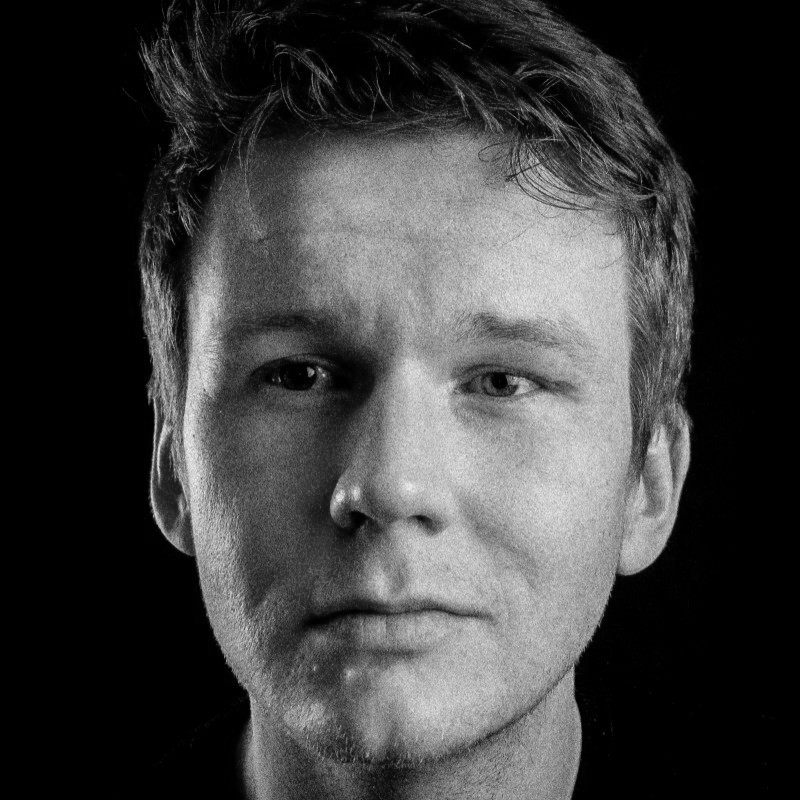
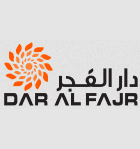
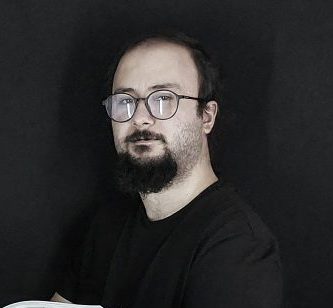
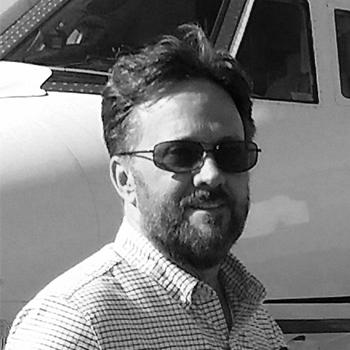

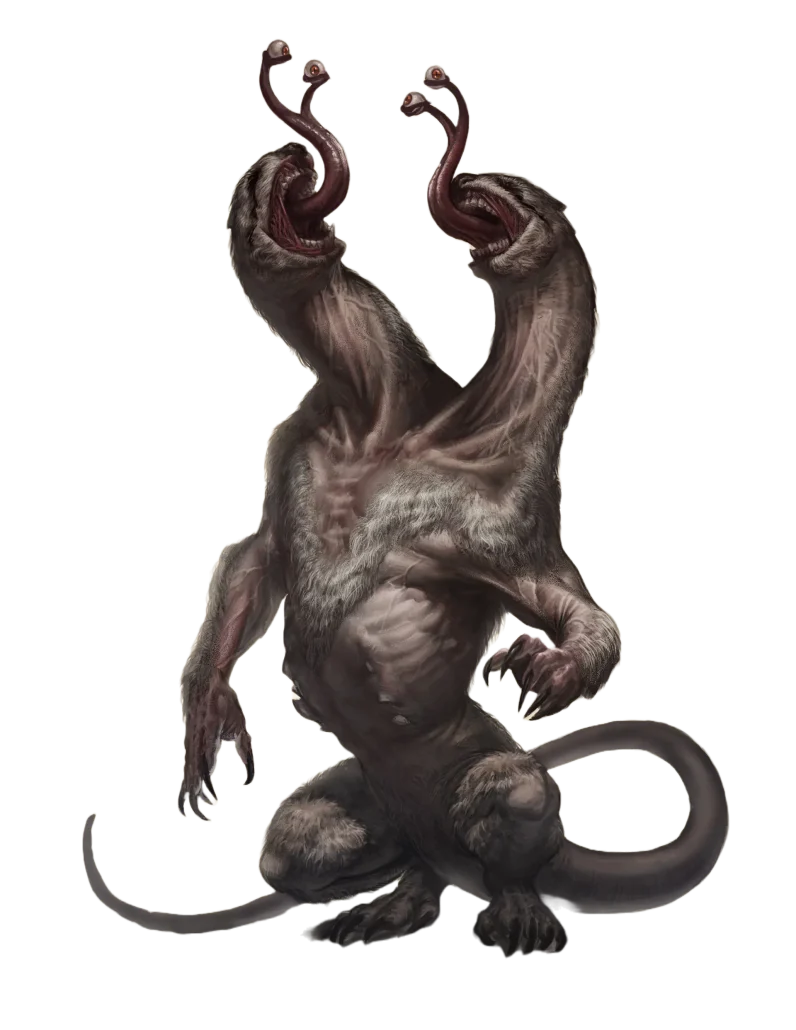
What Clients said





LET'S TALK ABOUT YOUR PROJECT
We’d love to chat with you about your project and provide you with a quote. Simply fill out the form below and we’ll get back to you as soon as possible.

